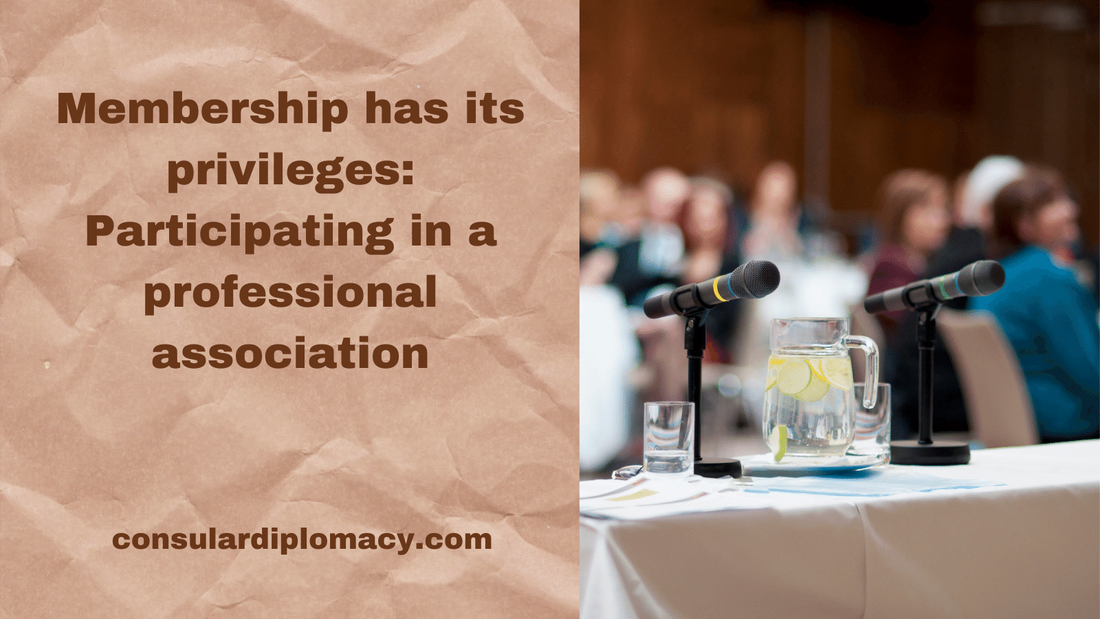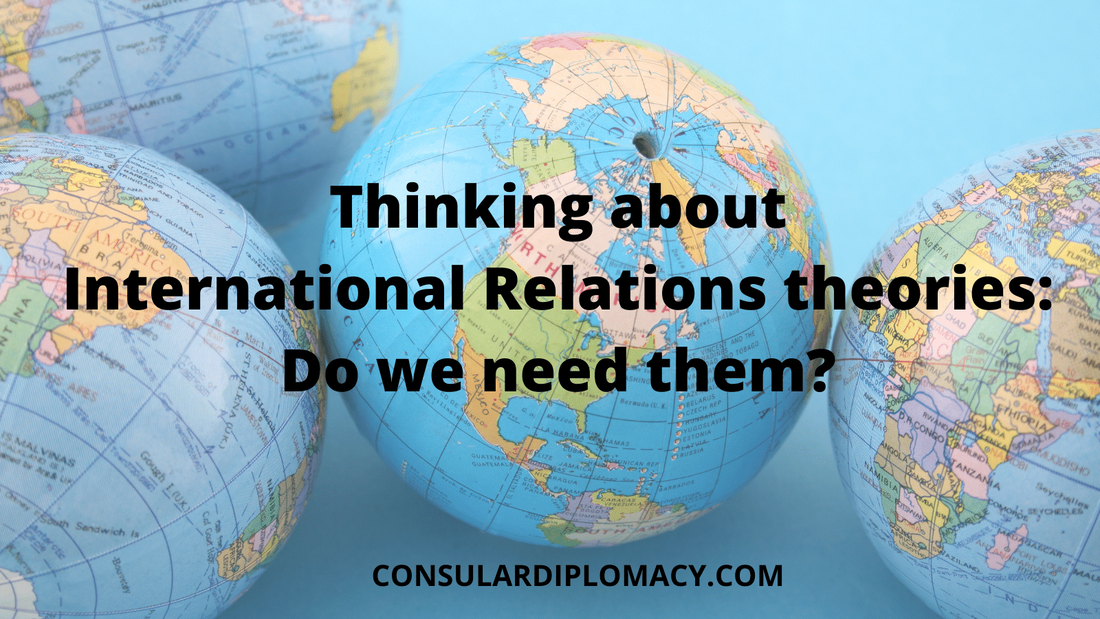 Last week I participated, for the first time, in the International Studies Association 2021 Virtual Convention. It was an amazing experience and reminded me of the importance of participating in these types of activities, which is hard to do for practitioners of IR and diplomacy. I think participation in a professional association´s conventions should be mandatory not only for MA and Ph.D. students but also for BA learners. There are many reasons why this should be, as there plenty of benefits beyond what the organization offers. It was heartwarming to see great scholars (new and experienced) saying they were nervous about presenting their work at the ISA Convention. In a few panels, presenters talked about the “impostor syndrome” even when they already published excellent research! However, in all cases, they received excellent feedback from fellow panelists and the participating audience. It is the perfect opportunity to develop a thick skin and tolerance, improve their presentation skills, and get awesome advice. For first-time members, participating in a convention is challenging to say the least, even if you are not presenting any paper. The challenges multiply in a virtual environment. However, ISA had a first-time participant live meeting, which was extremely helpful. I believe that the more you participate in the association and its conventions, the easier it gets. So, familiarity with the organization´s idiosyncrasy will help anybody enjoy the convention even more. It is also a great experience to connect with people who are doing interesting research, expand your horizons, and bring new perspectives to what you are doing. I saw a presenter using physics to describe power and influence in the global arena, which was awesome! Membership in professional organizations is an excellent way to network beyond your academic institution or work milieu. It opens up a whole world of opportunities to learn, share, and discuss your ideas with like-minded people. Besides, the breadth and depth of knowledge shared in a convention are mind-boggling. It will take me some time to absorb and process all this information. It definitely makes you think in different ways than before. After a year of reduced contacts and little or no traveling, it was refreshing to see so many people excited about the convention, even if it was digitally. Watching from home had its challenges but the coffee, according to many comments on Twitter, was a lot better than at the site´s coffee shops. I am not sure, but having a virtual convention might have boosted participation from Global South scholars, that usually would not attend as it is expensive to do so. And with the pandemic right out impossible to travel to most countries across the globe. The possibility of recording the sessions will make many of the convention participants continue to explore the panels that they missed or watch their favorite ones again. I know I will be watching panels for the rest of the month! Practitioners can learn so many things going on around the world, some of which can help them with their work. And there are so many panels; they can concentrate on just one topic throughout the convention and get real insight on that particular issue. Conventions are treasure-troves of information and knowledge from experts in that specific topic. Membership has its privileges, from seeing old friends (and a few intellectual foes) to participating in committee meetings and connecting with scholars. Therefore, I invite you to join a professional organization and attend their conventions. There is no downside to it.
0 Comments
“Theories are like maps. Each map is made for a certain purpose and what is included in the map is based on what is necessary to direct the map’s users. All other details are left out to avoid confusion and present a clear picture.” While preparing for a project, I have to review my understanding of International Relations (IR) theories. I was shocked to see how far the field has evolved since I studied them during my BA (1988-1993) and one of my MAs (1998-1999). Back in the day when I was a college student, it was a time of upheaval not only for the world but for the study of IR. The unraveling of the Soviet Union started with Gorbachev´s Glasnost and Perestroika, and by the end of 1991, it dissolved, changing the face of world politics and IR. My professors struggled, not just to keep up with the fast changes occurring, but trying to explain them to us, almost as they were happening. It was especially complicated for the professor teaching the course about the USSR’s politics and economy right after its collapse. Fortunately for me, in my GMAP studies (see a post about my experience here), I had the opportunity to take courses where I examined the significant changes that occurred at the end of the 1980s and the beginning of the 1990s, with a 18-year perspective. For me, it was a revelation. Since the Soviet Union’s disintegration, many things have changed, including the evolution explosion of IR theories. But, why do we need theories? I like the idea that “Theories are like maps. Each map is made for a certain purpose and what is included in the map is based on what is necessary to direct the map’s users. All other details are left out to avoid confusion and present a clear picture.”[i] Maps are appropriate for specific purposes, highlighting critical features while leaving out elements that are not necessary. Their focus and simplification give a sense of direction and location, regardless if you are moving or not. To go beyond the headlines and have a deeper understanding of the transnational world, you need a map to underscore what is essential, and with this knowledge finding solutions to humanity's problems might be more manageable. Without knowing where we are and what direction to look, we are lost. In the book International Relations edited by Stephen McGlinchey, there is an excellent overview of traditional, middle-ground, and critical IR theories. Back in my student days, there were but a few of them besides Realism and Liberalism and their “neo” versions. However, the theories explored in the book are but a few of the new ways IR scholars worldwide are probing the international system, how it works, and how its actors interact. Long are the days when the Nation-State was the only player of the international system. Nowadays, there are around 41,000 active intergovernmental and international non-governmental organizations, out of 213 in 1909.[ii] The digital revolution and fast changes in transportation have made the world smaller, with increasing blurring of borders which “has dramatically altered the general dynamics in politics and global affairs.”[iii] Besides, Tech companies are very different from their more traditional peers, as I explained in my post about Denmark’s Tech Ambassador to Silicon Valley. The influence they garner is unlikely any other actor in the international arena. All these changes have impacted the theories of International Relations. To learn more about the new ways scholars are interpreting the state of global affairs, I recommend reading the book International Relations Theory, edited by Stephen McGlinchey, Rosie Walters, and Christian Scheinpflug. The book’s second part is exciting as it includes new and different standpoints of IR theory from Green and Queer Theory to Indigenous and Global South Perspectives. In tune with the greater use of audiovisuals and online resources, the book publishers (E-IR) have a dedicated section with some useful videos useful to better understand some of the theories described in the book. I think that the inclusion of non-State, non-Western/European, non-male -centric perspectives in the field of International Relations is very much needed and welcomed. As the constructivism theory indicates, people construct the anarchic international system. Through changes in these beliefs, norms, and behaviors, there is a possibility of changing it to the human race's benefit. So, the inclusion of new visions and perspectives will only enrich the understanding of the system and hopefully find better ways to interact. Adding the Global South´s perspective into International Relations, including its theories, is significant because as societies recognized their own diversity, starting with a push towards greater inclusion of women and other minorities. In the chapter “Towards a Global IR?”, Amitav Acharya[iv] explains some of the reasons for “Western dominance in IR, [including the]…
Mexico has been working on expanding the IR vision from the Global South. An example is the publication of the book Teorías de Relaciones Internacionales en el siglo XXI: interpretaciones críticas desde México, edited by Jorge Schiavon et al., and published by the Asociación Mexicana de Estudios Internacionales (International Studies Mexican Association. A second edition had to be published after its successful launching, something uncommon for a book about theories! Another effort towards greater inclusion is the creation of the Global South Caucus of International Studies of the International Studies Association (ISU), ten years ago, together with the association´s efforts to include higher participation of Global South members as contributors, reviewers, and editors of its seven iconic journals. Besides, ISU is promoting more and deeper cooperation with its sister´s academic organizations and establishing in 2018 the Committee on the Status of Engagement with the Global South. Going back to the map as theory idea, I concurred that “Embarking on the study of International Relations without an understanding of theory is like setting off on a journey without a map. You might arrive at your destination, or somewhere else very interesting, but you will have no idea where you are or how you got there.”[vi] So, let´s open our map of choice and examine the situation we want to explain using IR theory. [i] McGlinchey, Stephen, Walters, Rosie and Gold, Dana, “Getting Started with International Relations Theory” in International Relations Theory, E-International Relations, 2017, p. 2. [ii] Cooper, Andrew F., Heine, Jorge and Thakur, Ramesh, “Introduction: The Challenges of 21st-Century Diplomacy” in The Oxford Handbook of Modern Diplomacy, 2013, p. 9. [iii] Gebhard, Carmen, “One World, Many Actors” in International Relations, E-International Relations, 2017, p. 44. [iv] Which happens to be a highly regarded IR scholar, and the first non-Western President of the International Studies Association (2014-2015). [v] Acharya, Amitav, “Towards a Global IR?” in International Relations Theory, E-International Relations, 2017, pp. 76-77. [vi] McGlinchey, Stephen, Walters, Rosie and Gold, Dana, “Getting Started with International Relations Theory” in International Relations Theory, E-International Relations, 2017, p. 2. DISCLAIMER: All views expressed on this blog are that of the author and do not represent the opinions of any other authority, agency, organization, employer or company. |
Rodrigo Márquez LartigueDiplomat interested in the development of Consular and Public Diplomacies. Archives
May 2024
Categories
All
|

